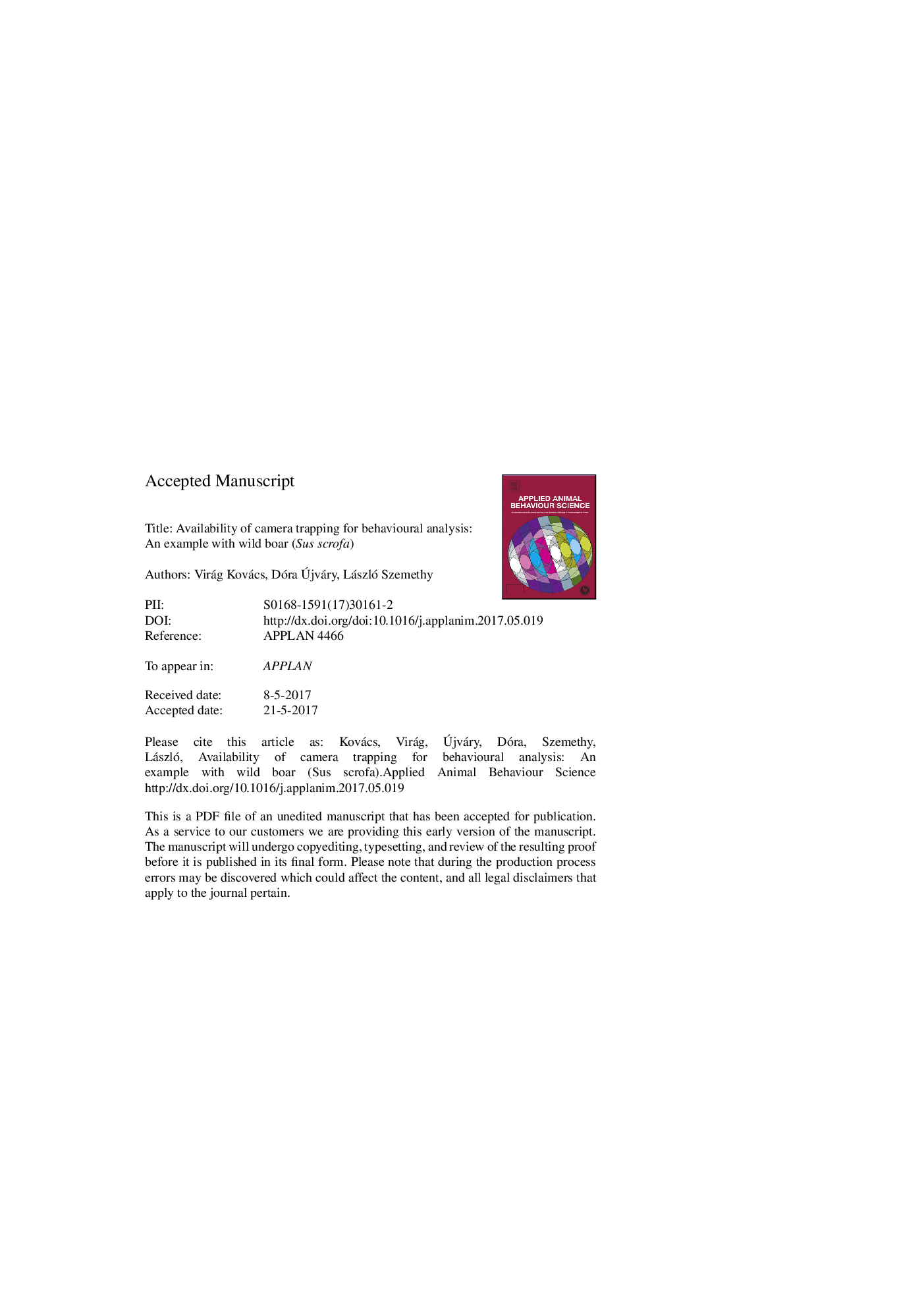| Article ID | Journal | Published Year | Pages | File Type |
|---|---|---|---|---|
| 5763255 | Applied Animal Behaviour Science | 2017 | 13 Pages |
Abstract
The animal welfare is maybe the main factor in livestock breeding, including keeping wild animals. In order not have any problems (health, economic), animals behaviour analyses with cameras can be an appropriate and relatively cheap solution. The present study aims to show the difference between the camera traps and hand-held cameras: which can be used better to determine and examine the behaviour of individuals (living in groups), to show those slight, but relevant differences what in terms of results can cause wrong conclusions. Our examined species was the wild boar (Sus scrofa). We used a hand-held camera for behaviour observations, and then these 5Â min videos were cutting-out short periods (20, 10 and 5Â s) to simulate the camera traps videos. We defined the dominant and submissive elements' frequency, and the proportion of feeding and social interactions. The results showed that the videos' length can modify those important differences from which we can get a fair view of the social porblems: the social interactions were underrepresented in the shorter videos.
Related Topics
Life Sciences
Agricultural and Biological Sciences
Animal Science and Zoology
Authors
Virág Kovács, Dóra Ãjváry, László Szemethy,
